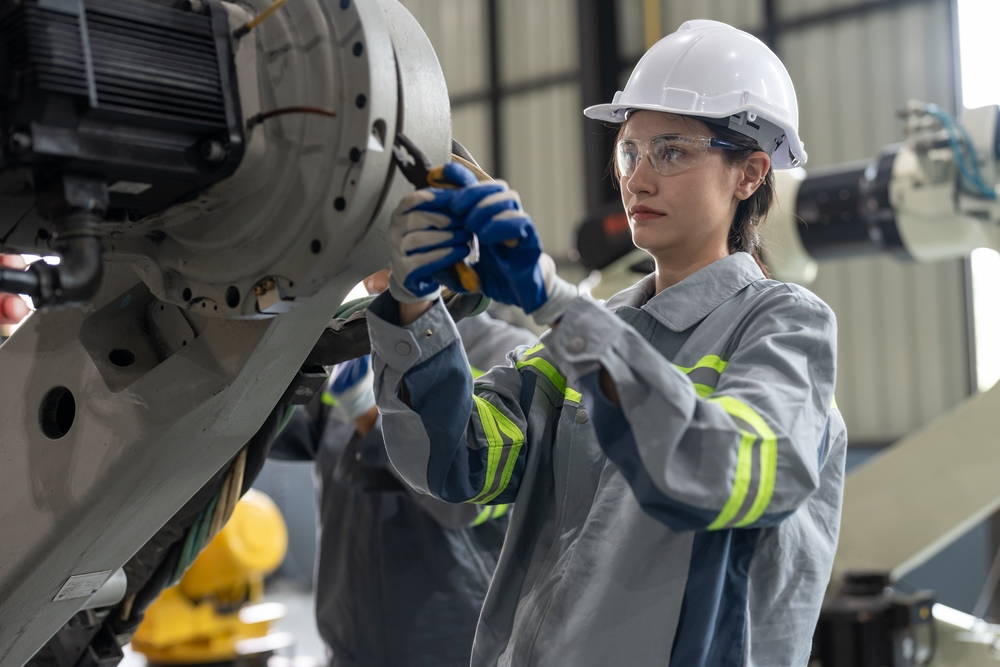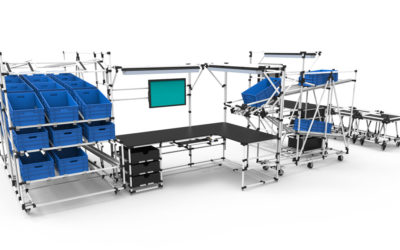In the world of modern manufacturing, achieving a balance between material flow and ergonomic considerations can be tough. The relentless pursuit of cramming more material into confined spaces often leads to an undesirable compromise between efficiency and worker well-being.
But this isn’t a compromise you and your peers need to settle for. Understanding the relationship between manufacturing flow and ergonomics, and how the right engineered solution can help these important initiatives work together is the first step toward concocting a successful production formula.
Understanding The Relationship Between Production Flow and Ergonomics
At the heart of any efficient manufacturing system lies the interplay between production flow and ergonomics.
Production Flow Defined
Production flow, or production workflow, is a concept within manufacturing that describes the movement and transformation of materials, components, and information through various stages of the production process.
It involves the systematic and efficient progression of raw materials to finished goods, with the aim of minimizing waste, optimizing productivity, and delivering high-quality products in a timely manner. We refer to the ideal state as “Lean.”
Key components of production flow include:
- Material movement
- Workstation sequencing
- Minimization of waste
- Pull systems
- Continuous improvement
- Supply chain integration
- Technology or automation integration
- Quality control
Manufacturing Ergonomics Defined
Manufacturing ergonomics, also known as industrial or workplace ergonomics, is a discipline that focuses on designing and arranging the physical work environment to best suit the capabilities and limitations of the human body.
In the context of manufacturing, ergonomics aims to optimize the interaction between workers and their workstations, tools, equipment, and overall work environment to enhance efficiency, productivity, and employee well-being.
Key aspects of manufacturing ergonomics include:
- Physical comfort and safety
- Workspace design
- Tools and equipment
- Workstation adjustability
- Lifting and material handling
- Visual and environmental factors
- Training and awareness
- Feedback and improvement
As you could assume, many of the aspects of manufacturing flow can “butt heads” with aspects of manufacturing ergonomics. However, with the right strategic solutions, it is possible to blend the two.
Innovative Solutions for Better Material Handling
If you’ve identified a need for a better balance between manufacturing flow and ergonomics in your facility, try one or more of these solutions — all available in customized options through Geolean.
1. Kit Carts
A kit cart is a mobile cart designed to facilitate the transportation and organization of materials, tools, and other components within a manufacturing environment. They are the unsung heroes of material handling, offering creative solutions to simplify the often-overlooked task of loading and unloading.
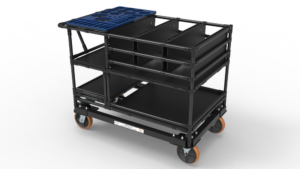
These mobile workstations are designed to streamline the movement of materials and minimize disruptions to the overall flow. Specific features include:
- Custom dunnage combinations to facilitate safe delivery of parts (often without secondary packaging)
- Swing gates, seatbelts, hinged shelves, and more options allow for easy yet secure access
- Mother/daughter carts for seamless transfer and reduced time to deliver new product
- Deliver the right amount of product in the right orientation at the right time.
As a result, not only do kit carts make material handling more efficient, but ergonomic considerations are also taken into account to ensure your workforce can execute tasks with comfort and ease.
2. Flow Racks
A flow rack is a storage system designed to optimize the movement and accessibility of products within a manufacturing environment. The genius of flow racks lies in their ability to minimize unnecessary steps and improve part presentation, both critical aspects of efficiency and ergonomics.
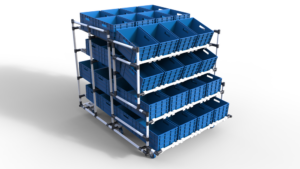
By bringing materials directly to the point of use, these racks ensure that your team can maintain a steady pace without the hindrance of excessive movement. Their mainstay features and benefits are:
- Various front-orientation options like tilt, stagger, turn, and lift-assist.
- Fewer steps between the aisle and the operator
- Regulated amount of inventory in the workspace and signal when to reload
- Return empty containers to the material handlers to easily refill
- Low-cost solutions with impressive value
3. Workstations
A workstation is a specific area within a manufacturing facility where tasks related to the production process are carried out. A well-designed workstation increases productivity and efficiency while protecting workers from repetitive motion and stress injuries — or, again, balances flow and ergonomics.
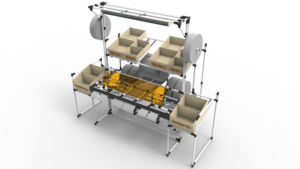
An effective workstation will also:
- Reduce walking
- Reduce reaching (bring items into the “golden zone” of ergonomics)
- Save space in the work area
- Betters organization and time management
Get Custom Lean Manufacturing Solutions From Geolean
Balancing material flow and ergonomics considerations isn’t just a goal — it’s a necessity. Plus, with innovative, height-adjustable kit carts and low-cost yet high-value flow racks, it’s possible. At Geolean, we’re here to help you make it happen.
From providing custom product solutions to ongoing consultation for continuous improvement, our team is dedicated to your success. Get started today by contacting us online.
